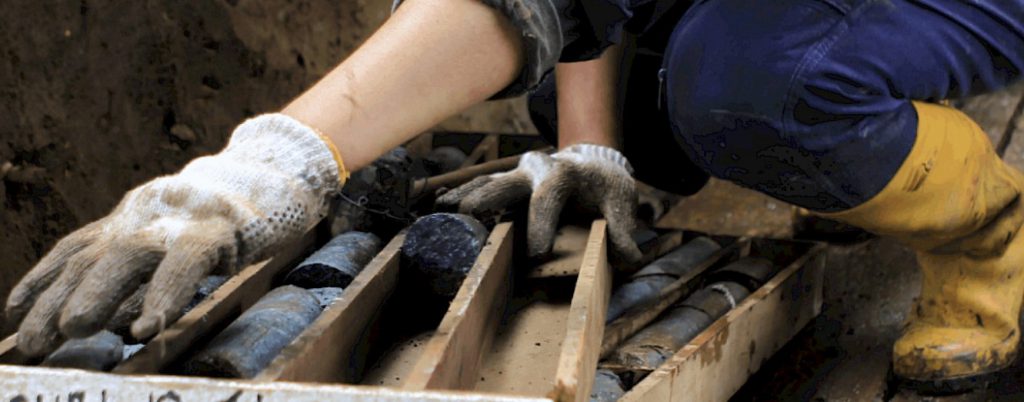Salazar samples 20.2 g/t gold, 1,217 g/t silver at Los Santos, Ecuador

Salazar Resources Ltd. [SLR-TSXV; SRLZF-OTCQX; CCG-FSE] reported sampling results and an update on drilling progress in Ecuador. At Los Santos, channel and rock-chip samples from the Brecha Sur and Leon prospect areas confirm gold, copper and silver mineralization.
A phase 1 drill program is underway at Los Santos, El Oro Province, with two holes completed for a total of 526 metres. Initial core samples from these two holes are at the laboratory, with assays pending. A second rig has been mobilized to site. An additional 2,500 metres of drilling is planned to be completed in H1 2022, taking the drill program to approximately 3,000 metres.
Following the completion of drilling two holes at the 100%-owned Ruminahui project, the rig was moved to Los Santos. Almost all the assays have been received from the holes, without significant mineralized intersections. Assays from the last 64 m of the first hole are pending.
At the Brecha Sur target grab sample results include 20.2 g/t gold and 1,217 g/t silver. At the Esperanza target drillhole SAN-001 at a downhole depth of 132 metres intersected a 10-metre wide sheared and veined, sulphide-rich zone with fine visible gold. There are two rigs at site, with the next holes planned for Leon and Brecha Sur
Fredy E. Salazar, CEO, commented: “Intersecting visible gold in core in the first hole is an encouraging start, even if we have to wait for the assay results to confirm the gold content. The VG, plus great rock chip results, and the fact that Los Santos is a large concession area with many drill targets, has prompted us to send a second rig to site.
“In the south of Los Santos we have discovered a series of hydrothermal breccias, Brecha Sur, with some grab samples returning good gold and silver grades. Interestingly it is along strike from Esperanza, where the first holes went in, so it could be linked to the same mineralizing system. Given its volume, Brecha Sur has good tonnage potential and it is a high priority drill target. With two rigs we can advance quickly and we should complete the drilling by the end of April, with assays to follow.”
Exploration at Los Santos is currently underway, including mapping, sampling, and drilling. Several targets to be drill-tested have been identified. Drilling is in progress, and Phase 1 is expected to consist of up to 3,000 metres. The drilling is exploratory in nature, and the program will remain live and flexible.
| At Esperanza, two drill holes were collared in weakly sheared, partially metamorphized tonalites, oriented almost due west, with a dip of 60o. The core has been logged, and assays are pending. Drillhole DDHSAN-001A was completed at a downhole depth of 299 metres, having intersected three principal zones of interest. |
| Drillhole DDHSAN-002 was collared approximately 100 metres south of the first hole, and completed at a downhole depth of 227 metres, having intersected one zone of interest. |
Brecha Sur translates as ‘South Breccia’ and is a broad anomalous zone characterized by breccias in the south of the concession. As previously reported, a highlight of the reconnaissance sampling was 1.5 metres of 4.6 g/t gold and 8.6 g/t silver.
Current work is focused on detailed mapping and sampling of the southernmost breccias, ahead of drilling. Since the December 13, 2021 release, assays have been returned for nine samples taken on an outcrop with an approximately 30 metres diameter. Of the nine samples, eight were above 0.2 g/t gold and five returned grades above 1 g/t gold, with the highest being sample #305919 with 20.2 g/t gold and 1,217 g/t Ag. As at Esperanza, the mineralization at Brecha Sur is oriented in line with the regional structural fabric NNE-SSW.Brecha Sur translates as ‘South Breccia’ and is a broad anomalous zone characterized by breccias in the south of the concession. As previously reported, a highlight of the reconnaissance sampling was 1.5 metres of 4.6 g/t gold and 8.6 g/t silver.
In 2021 two diamond drillholes were completed at Ruminahui for a total depth of 1,327 metres. The holes were designed to test the San Francisco anomaly that centered on a system of quartz veins with pyrite, chalcopyrite, and significant gold grades, related to a regional shear zone.
